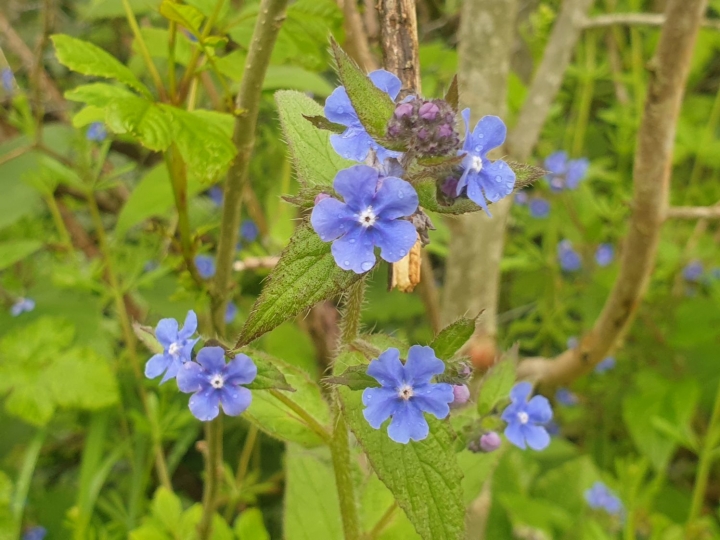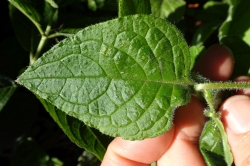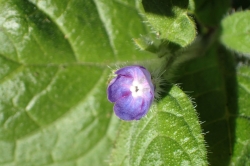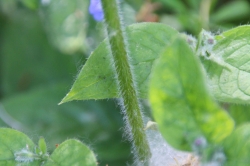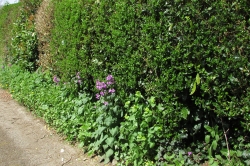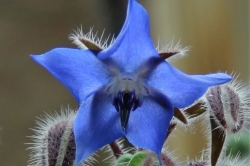Green alkanet is a common weed of gardens and grows prolifically where ever it has a chance. Easily confused with borage or comfrey but with clear differences, it is in the same family but a different genus. It forms clumps with stems up to 1m tall. It was regarded as edible, though foul tasting, however it has now been shown to contain carcinogens. Take care when handling as the hairs or bristles can be very irritating
Home / Hedgerow Guide /
Green Alkanet
Green Alkanet
| Hedgerow Type | |
| Common Names |
Green Alkanet, Alkanet, Evergreen bugloss |
| Scientific Name |
Pentaglottis sempervirens |
| Season Start |
N/A |
| Season End |
N/A |
Please note that each and every hedgerow item you come across may vary in appearance to these photos.
Leaves
Hairy spade shaped leaves normally up to 20cm long but can reach 40cm. The leaves are retained through the winter.
Flowers
Small, 8-10mm, delicate blue flowers with white centres. The stamens are hidden inside the narrow tube forcing insects to squeeze inside or use long tongues to reach the nectar.
Habitat
Although introduced into the British Isles the plant is widely naturalised and thrives in any damp environment, especially gardens. Here it looks like some kind of deliberately planted specimen until it gets established. The pretty blue flowers are alluring, but once it sets seed it soon gets established coming back year after year. Loved by pollinating insects so don’t rush to pull it up (and use gloves if you do).
Possible Confusion
The most likely confusion would be with borage which is in the same family and edible. A careful inspection reveals that the flowers although both blue are clearly different in shape and structure. Borage flowers have tapering petals to give the star shape and the sepals/extra leaves behind and imbetween the petals. The centre of the flower is dark blue and protrudes.
Frequency
Common.
Other Facts
Alkanet is a name applied to several unrelated plants including green or dyers alkanet. Pentaglottis means 5 tongues referring to the structre of the flower, and sempevirens means evergreen.

